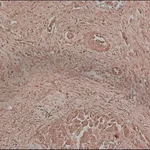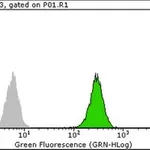
Merck Anti-N-Cadherin Antibody, clone 13A9
✨AI 추천 연관 상품
AI가 분석한 이 상품과 연관된 추천 상품들을 확인해보세요
연관 상품을 찾고 있습니다...
Anti-N-Cadherin Antibody, clone 13A9
culture supernatant, clone 13A9, Upstate®
Cadherin-2, CD325, CDw325, N-cadherin, Neural cadherin
Cadherin-2 (UniProt P19022; also known as CD325, CDw325, N-cadherin, Neural cadherin) is encoded by the CDH2 (also known as CDHN, NCAD) gene (Gene ID 1000) in human. Cadherins constitute a family of calcium-dependent cell-cell adhesion proteins that play important roles in the embryonic development and maintenance of normal tissue architecture. Cadherins are composed of an extracellular domain (a.a. 160-724 of human N-cadherin) with five homologous repeats that mediates adhesion, a single pass transmembrane domain (a.a. 725-745 of human N-cadherin), and a conserved cytoplasmic domain (a.a. 746-906 of human N-cadherin) that interacts with catenins to link cadherins to the actin cytoskeleton. In addition, a known Src substrate p120ctn also modulate the strength of cadherin-dependent adhesion by interacting with cadherins at their intracellular juxtamembrane domain. Cadherins are synthesized as precursor proteins that must be proteolytically cleaved to generate functional, mature proteins. Newly synthesized proN-cadherin (a.a. 1-906) is phosphorylated and proteolytically processed prior to transport to the plasma membrane. In addition, Plakoglobin (gamma-catenin) and beta-catenin associate only with phosphorylated proN-cadherin, whereas p120ctn can associate with both phosphorylated and non-phosphorylated proN-cadherin. The N-terminal signal and propeptide (a.a. 1-25 and 26-159 of of human N-cadherin) region is proteolytically removed and a core N-cadherin-catenin complex is assembled in the endoplasmic reticulum or Golgi compartment prior to localization at the plasma membrane where linkage to the actin cytoskeleton can be established.
🏷️Merck Sigma 상품 둘러보기
동일 브랜드의 다른 상품들을 확인해보세요

Merck Sigma
Merck Anti-Hypoxia Inducible Factor 2 α Antibody, clone 190b
657,900원

Merck Sigma
Merck Anti-Fetuin A antibody, Mouse monoclonal
228,700원

Merck Sigma
Merck Anti-N-Cadherin Antibody, clone 13A9
676,800원

Merck Sigma
Merck Anti-c-Jun Antibody, clone 6E4.4
517,700원

Merck Sigma
Merck Anti-Fibronectin Antibody, CT, clone 868A11
206,000원
배송/결제/교환/반품 안내
배송 정보
| 기본 배송비 |
| 교환/반품 배송비 |
|
|---|---|---|---|
| 착불 배송비 |
| ||
| 교환/반품 배송비 |
| ||
결제 및 환불 안내
| 결제수단 |
|
|---|---|
| 취소 |
|
| 반품 |
|
| 환급 |
|
교환 및 반품 접수
| 교환 및 반품 접수 기한 |
|
|---|---|
| 교환 및 반품 접수가 가능한 경우 |
|
| 교환 및 반품 접수가 불가능한 경우 |
|
교환 및 반품 신청
| 교환 절차 |
|
|---|---|
| 반품 절차 |
|
